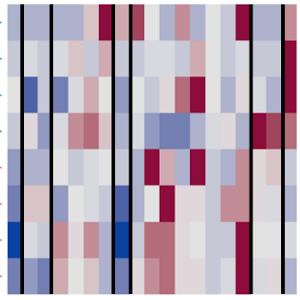Forage fishes are ecologically and economically important in marine ecosystems worldwide and thus are a focal topic for ecosystem-based fisheries management. In the California Current Large Marine Ecosystem (CCLME), the community dynamics of forage populations have been studied at regional spatial scales, but not across regions. To evaluate indicators of the forage community at the ecosystem-wide scale, we examine temporal variability of forage assemblages in Northern (Oregon/Washington), Central (California; Point Reyes to Monterey Bay) and Southern (southern California) regions of the CCLME from 1998 through 2016 which include years with unprecedented climate variability. Forage communities fluctuated greatly between years within each region owing to regionally low abundances of common taxa in at least some years (e.g., rockfishes Sebastes spp. in each region). Comparison of species assemblages among regions indicate that temporal shifts in assemblage structure were largely synchronous throughout the CCLME. However, dynamics of most individual taxa were out of phase between regions, indicating that different taxa drove the variability in each region. Within regions, taxa with similar adult ecological niches tended to co-vary, suggesting synchronous responses to environmental forcing. Major changes in forage assemblage structure are descriptively linked to large oceanographic perturbations such as the transition from El Niño to La Niña conditions in 1998, anomalous upwelling in 2005, and the onset of a large marine heatwave in fall-winter 2013–2014. Changes in forage assemblage structure are reflected in prey switching in the diet of California sea lions, Zalophus californianus, in the Southern region. The multivariate forage indices that we develop can serve as effective indicators of regional forage community composition shifts in the CCLME and provide managers with context on spatio-temporal changes in the structure of forage fish communities important to top predators in this system.
Indicators of pelagic forage community shifts in the California Current Large Marine Ecosystem, 1998–2016
Publication date
October 22, 2019
Abstract
Journal
Ecological Indicators
Region
California Current

